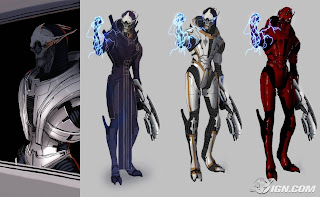Q: "What are the different fields of art you can go into?"
This is an excellent question, as most people don't realize just how vast the topic of "art" is. Categorizing fields of art can be a little difficult, but I'll do my best.
Fine Art - Everyone knows fine art. You go to a museum and there's paintings all over the wall. You visit a park and there's a statue of some long-dead soldier riding a horse. This is fine art. It's a broad field, but fine art can generally be defined as pieces of work often made in traditional mediums, created for the sole purpose of being placed on display for people to enjoy. Fine art is usually a painting, a sculpture, or a drawing. It's difficult to make money doing fine art, but because of this, I find that fine artists have an incredible amount of passion for what they do, and they simply live for their art.
Concept Art for Video Games - Same as for film, but game artists often have to design even more detail than film artists, because they are designing an entire 3D world for the player to explore. That soldier that just slaughtered you in PvP had to be designed by someone!
Stop Motion Fabrication - Stop motion is a small industry right now, but fabrication is a BIG job. Fabricators build the physical puppets, sets, and props for stop motion films. These people have to know sewing, carpentry, and a huge variety of craft skills in order to make everything needed for a stop motion film.
I think that's enough of fields of art in film. Let's look at something completely different.
Fashion Design - Fashion designers sketch out concepts for outfits, decide what does or doesn't work, then create the outfit by hand. While the popular fashion designs to publicize are dresses, fashion designers will design any and all kinds of clothing. The clothes you're wearing right now started as a simple concept sketch in a fashion designer's sketchbook.
Graphic Design - Graphic designers create logos, choose the fonts and layout of a product label, or design the whole look for a website. Graphic design is another broad topic, but graphic designers often work freelance, hired only for single projects by a business client.
Photography - This one is pretty straight forward. Photographers take photos. However, they don't always simply take pictures of pretty landscapes to hang in galleries. Nature photographers will travel across the world simply to get rare shots of exotic animals. Product photographers specialize in getting the most appealing shot of a company's product - from iPones to Big Macs. Fashion photographers take photos specifically to show off the latest outfits in a fashion magazine. There are a lot of options in photography.
This is really only scratching the surface and generalizing a lot of information, but I think this post is already huge enough.
You know the drill. Any questions or requests to know more, leave a comment!
(Disclaimer: I own none of the images in this post. All images are copyright their original owners)































